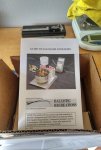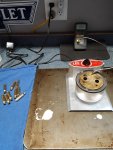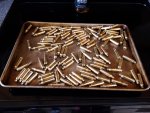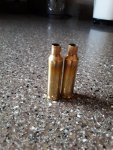Well, we could make the salt exactly 750 degrees if we wanted to, but by the time the brass heats up to 750 at the neck, the case head would be heating up too, which is exactly what you don't want. By increasing the temperature to 500 degrees Celcius (or 932 Fahrenheit), we decrease the time needed in the salt bath. Dropping it in a quench bucket immediately stops the heat progression towards the case head. The reason we use 932 degrees (or thereabouts) is because heat transfer is quantified by a logarithmic function. This means that it increases quickly at first and as time continues, the derivative of the function decreases (the rate of change is slowing), with a horizontal asypmtote at the temperature of our salt bath. When we pull the brass at 4-6 seconds, I would hazard a guess that we aren't close to 932 degrees.
If this seems weird, then look at any flame annealing method. How hot is that flame you're spinning your brass in? 3500 degrees? That's a far cry from the 750 you're trying to hit, but it's because you need to heat the brass quickly and then get it out of the flame so it doesn't anneal the case head. We use the same concept in setting the dwell time. As long as our dwell time is consistent, our brass will be consistent.
You're also thinking that a higher temperature will "overcook" your brass. That's not really the way annealing works. "For cartridge brass, the transformation is rapid, robust, and occurs at approximately 650-700 degrees Fahrenheit. If you apply a higher temperature, the brass will get even softer, but not dramatically so. (Bison Ballistics)." Once you hit the annealing point of brass, you're not making much of a difference by going a little hotter. Thus, if we extend our dwell time by a second or two (as long as we're not heating the case head) we won't make that big of a change in brass structure compared to a shorter dwell time as long as we're getting the brass to the correct temperature to begin with.
https://bisonballistics.com/articles/the-science-of-cartridge-brass-annealing








